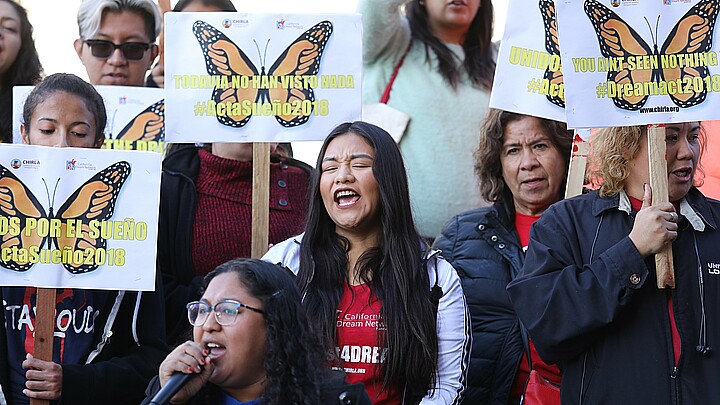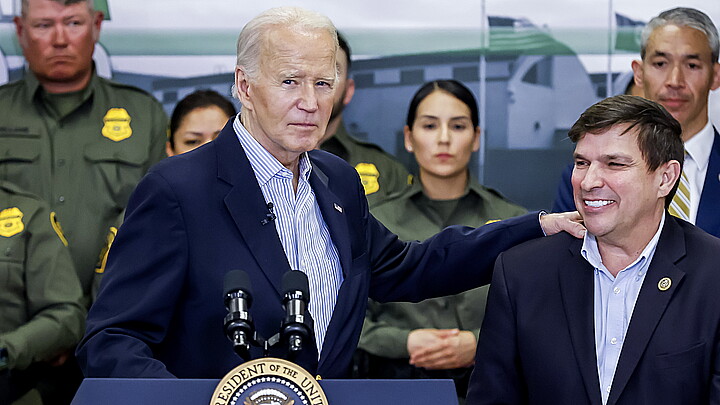Immigration
DHS silent on structural changes despite imminent migrant influx amid sunset of Trump-era asylum policies
The Department of Homeland Security reported Thursday that more migrants are expected to cross the U.S. border, but has offered no indication how it plans to address the Trump-era policy changes or catch up on its extensive backlog of asylum applications

December 19, 2022 9:14am
Updated: December 19, 2022 9:28am
The Department of Homeland Security reported Thursday that 50,000 more migrants are expected to cross the U.S. border to pursue legal status when Trump-era asylum restrictions end next week, but has offered no indication how it plans to address those changes or catch up on its extensive backlog of asylum applications.
DHS released a detailed report before the policy change indicating it had achieved quicker processing procedures for migrants being detained at the border along with expedited criminal prosecutions of smugglers and establishment of temporary detention tents and filling staff shortages.
Absent from that report however were indications of how the embattled department planned to deal with the relentless influx of migrants headed toward the border as nationwide encounters hit record highs.
Tens of thousands of migrants are expected to make border crossings with the end of Title 42 authority, a policy which changed and delayed the procedures for migrants to apply for asylum amid the COVID-19 pandemic.
The Trump-era policy recently came to an end after it was struck down by a U.S. District Court federal judge who found the policy was no longer had a rational relationship to the purpose it was trying to achieve since authorities have announced an end to the pandemic.
The Biden Justice Department has opposed some parts of the decision, but not the central ruling that let the policy lapse next week.
Homeland Security Secretary Alejandro Mayorkas flew to El Paso, Texas, this week to meet with Custom Border Protection officials and discuss one of the hottest border crossing areas in the United States. That crossing point has become a popular thoroughfare for Cubans, Colombians, Ecuadoreans, Nicaraguans and Venezuelans.
Authorities are reportedly focusing on Texas because it has also been a popular corridor for human smugglers, which U.S. authorities are trying to crack down on.
One issue DHS authorities will have to decide on is how they’re going to catch up on the many asylum applications that were delayed under the policy.
U.S. Rep. Henry Cuellar from Texas said CBP officials told him Wednesday that an estimated 50,000 migrants could be waiting to cross the Mexico-Texas border once Title 42 is lifted. Cuellar said U.S. officials are currently planning to admit asylum seekers who pass through ports of entry, but will return those who pass through illegally to Mexico.
The federal government has not yet detailed the process in which will return those nationalities which Mexico is currently not accepting such as Cubans and Nicaraguans since the communist regimes in those countries sometimes refuse to take their own citizens back.
ADN America has previously reported that Latin American communist regimes have intentionally created the migrant crisis by encouraging some of their citizens leave, similar to the Cuban Mariel Boatlift in 1980. The migrant influx purportedly creates a bargaining chip for those regimes when trying to negotiate the removal of U.S. sanctions.
“I think the first week is going to be a little bit of chaos,” Cuellar said.
The recent CBP assessment also reported that U.S. agencies “have been managing levels well beyond the capacity for which their infrastructure was designed and resourced, meaning additional increases will create further pressure and potential overcrowding in specific locations along the border.”
As a result, the number of single adults and families with young children being sent into U.S. communities may increase. Those individuals will be expected to reappear in immigration court, DHS said.
While DHS did not indicate how many migrants may cross the border when Title 42 ends, it expected as many as 18,000 a day.
As a result, Mayor Oscar Lesser declared a state of emergency Saturday out of concerns about the influx and the current freezing temperatures in Texas.
“That’s not the way we want to treat people, “Leeser said during a Saturday evening news conference.”
The Democratic mayor added that the imminent increase will be “incredible” after Wednesday and said he expected that street releases could rise as high as 6,000 per day.
El Past Deputy City Manager Mario D’Agostino said the State of Emergency will give the Mayor power to use available buildings as shelters and offer transportation for migrants in need
“It’s for the safety of themselves… community members and everyone involved,” he said. “We want to make sure we’re prepared for that and we can react to that, so this is just the next step to make sure we’re prepared.”
While some concerns have been expressed in the past between the Democratic mayor’s relationship with Republican Gov. Greg Abbott, Leeser said the governor promised his office would coordinate all efforts with the City of El Paso.
“This is bigger than El Paso,” Leeser said during the conference. “This is a United States issue (requiring) working with each other.”











